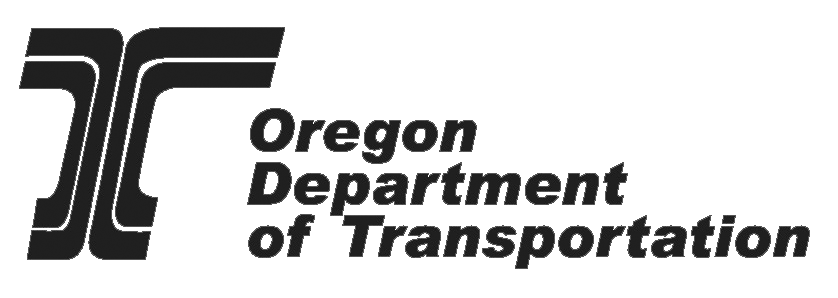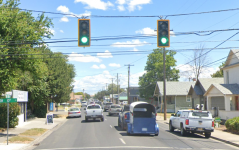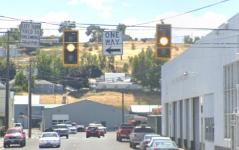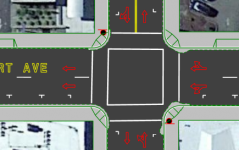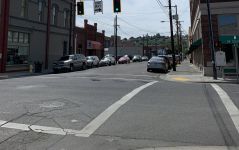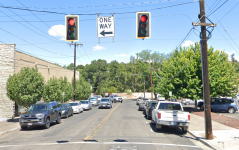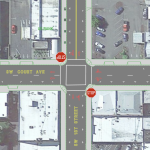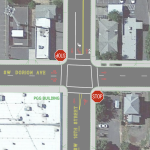This intersection improvement project is part of an overall region-wide effort to identify unneeded infrastructure.
These signals in Pendleton are outside their existing lifespan. The intersection traffic conditions have changed since the original installation of the signals, and from a traffic volume and safety perspective, they are no longer needed.
This online open house gives you more information about the project and an opportunity to provide comments.
This open house closes Tuesday, June 4, 2024, at 5 p.m.
Please visit each of the stations below to learn more about the project and submit your comments at the end.
Stations
Project overview and locations:
We are designing an intersection improvement project at: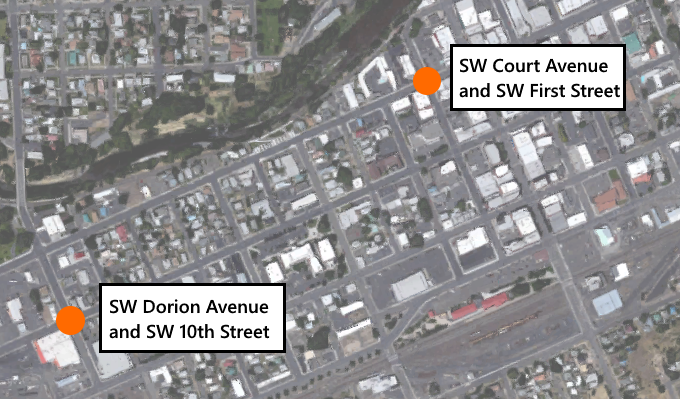
- SW Court Avenue and SW First Street.
- SW Dorion Avenue and SW 10th Street.
We intend to remove the signals and replace them with two-way stop control. We have selected these signals for removal because they are no longer needed.
By removing them we will:
- Improve the flow of traffic on SW Court Avenue and SW Dorion Avenue.
- Reduce signal related accidents.
- Reduce the need for continued maintenance.
- Eliminate costs.
Previous signal work:
ODOT and the City of Pendleton have worked together to remove signals at the following locations:
- SW Dorian Avenue and SW Seventh Street.
- SW Dorion Avenue and SW Fourth Street.
- SE Dorion Avenue and SE Third Street.
- SW Court Avenue and SW Seventh Street.
- SW Court Avenue and SW Fourth Street.
- SE Court Avenue and SE Third Street.
- SW Frazer Avenue and SW 13th Street received a rectangular rapid flashing beacon (RRFB) for pedestrians.
- Main Street and Byers Avenue.
Project cost:
This project is currently funded for preliminary design, utility relocation and right of way at a cost of $800,000.
Project schedule:
- Project design 2023-2025.
- As part of the design process, we will:
- Cover the existing traffic signals and install two-way traffic control.
- Monitor traffic for 90 days in this new configuration.
- Seek public comments.
- Evaluate data and compile comments.
- As part of the design process, we will:
- Project is expected to bid June 2025, with construction in 2025-2026.
Why are we removing traffic signals at these intersections?
Traffic signals are sometimes thought to be a solution for all traffic problems at intersections. While they have their place, we need to look at the justification, or warrants, for installing new or keeping current signals.
ODOT must follow state (Oregon Revised Statutes - ORS), (Oregon Administrative Rules - OARs) and federal transportation regulations. For traffic signals specifically, we follow the Manual of Uniform Traffic Control Devices (MUTCD). This defines the minimum conditions under which installing traffic control signals might by justified. A traffic control signal should be removed if MUTCD warrants are no longer met.
These signals were first installed in 1960/1961 prior to construction of the interstate in 1967. Traffic patterns and volumes have changed since then. However, using the MUTCD to review traffic operations and crash history at these intersections, we found they are no longer needed at these locations.
One component of traffic operations includes looking at traffic and pedestrian volumes. Looking at numbers going back to the 1950s, these two locations have seen a reduction in annual average daily traffic (AADT) over the decades. This is true in Pendleton and other locations in Eastern Oregon.
The 10-year crash history at SW Dorion Avenue and SW 10th Street shows the majority of crashes are caused by drivers ignoring or disregarding the traffic signal. Rear-end collisions are the leading crash types, which typically increase with signalized control.
What are the benefits of removing signals?
We have selected these signals for removal because they are no longer needed. By removing them we will:
- Reduce delay for travelers on Dorion and Court avenues.
- Reduce signal related crashes.
- Reduce the need for continued maintenance.
- Eliminate future maintenance costs. Cost savings will help fund improvements at other, busier signal locations in downtown Pendleton.
What are the disadvantages of keeping the signals?
Keeping the signals at these intersections may lead to:
- Excessive delays. Waiting at signals with no cross traffic can be frustrating.
- An increase in the number of drivers failing to follow the signal. Excessive delays caused by unnecessary signals create unreasonably long wait times at low volume roads.
- We have data that shows a significant number of crashes at SW Dorion Avenue and SW 10th Street are caused by drivers ignoring or disobeying the signal.
- Significant increases in the frequency of certain types of collisions, especially rear-end collisions.
- Our data shows a high number of rear-end collisions at SW Dorion Avenue and SW 10th Street.
- Increased use of alternate routes as drivers attempt to avoid the traffic signals.
What kind of traffic control will replace the signals?
Interim
We will install two-way traffic stops at both intersections for 90 days and monitor this new traffic configuration. See interim traffic control diagrams below.
- SW Dorion Avenue and SW 10th Street: Traffic on Dorion Avenue will no longer be required to stop. Drivers travelling north or south on 10th Street will stop before crossing or turning onto Dorion.
- SW Court Avenue and SW First Street: Traffic on SW Court will no longer be required to stop, while traffic on 1st Street will stop before crossing or turning onto Court.
Long-term
Our plan is to remove the signals and keep these two intersections in this two-way stop pattern after the monitoring and comment period. We need to evaluate how this new pattern works and make sure it’s safe. We will determine if other changes to the intersections are needed.
Timeline:
Here’s what you can expect for the next six months. (Dates are approximate and subject to change.)
-
Feb. 26: Launch online open house. We will announce the open house through news releases, radio advertising, social media posts, and sidewalk signs at the affected intersections. The open house and public comments will be open during the 90-day monitoring period.
-
March 4: Cover signals at both intersections and set up two-way stop interim traffic control.
-
March 5-June 5: Monitor the intersections in the interim two-way stop configuration.
-
March 5-June 5: Gather data and compile comments.
-
June 5-August: Close open house and public comments. Evaluate data and incorporate intersection improvements into final design.
-
Summer 2025: Begin construction.
What you can expect
Flashing yellow signals
To reduce confusion at both intersections, we will turn on the flashing yellow function. If you are driving east on Dorion Avenue or west on Court Avenue, please follow these guidelines:
- Approach each intersection at a safe speed.
- Do not stop unless there is someone in the crosswalk.
- Be aware of pedestrians and stop for them when necessary.
- Turn safely when needed.
By following these rules drivers on SW 10th Street and SW 1st Street will have ample opportunities to cross the intersection or make a turn.
Temporary traffic markers
We will install temporary traffic markers at both intersections to act as curb extensions, similar to those found at other intersections in town (U.S. 395 and Southgate Place). These features will help side street traffic feel more comfortable pulling forward after stopping, which will enhance visibility when approaching Court and Dorion avenues from either the south or the north.
Why are we making these changes now?
The monitoring process is dynamic and requires adjustments based on traffic flow patterns. Based on observations we need to address vehicle traffic that may be stopping unnecessarily at the signal while the signal is turned off.
SW Dorion Avenue and SW 10th Street
While monitoring traffic at the intersection of SW Dorian Avenue and SW 10th Street, we observed confusion among drivers. Specifically, some drivers traveling east on Dorion Avenue are stopping or slowing down to let vehicles on SW 10th Street cross the intersection. This behavior is unexpected and potentially dangerous.
Vehicles traveling northbound or southbound on SW 10th Street are required to come to a complete stop behind the stop lines or crosswalk markings. As necessary, drivers may pull forward slowly and scan the area for any potential risks before proceeding.
SW Court Avenue and SW First Street
We have received feedback from drivers regarding the limited visibility they experience around parked vehicles on SW Court Avenue. To ensure the safety of all road users, drivers approaching the intersection on SW First Street are required to come to a complete stop behind the clearly marked stop lines or crosswalks. If necessary, drivers may slowly pull forward and scan the area for any potential hazards before proceeding.
Traffic volumes and crash history
The 10-year crash history at SW Dorion Avenue and SW 10th Street shows that most crashes are caused by drivers ignoring or disregarding the traffic signals. Rear-end collisions are the most common and typically increase with a traffic signal. These signals were installed in 1960/1961 before the construction of Interstate 84 in 1967. Traffic patterns and volumes have changed since then. Traffic volumes on SW Dorion, near SW 10th, peaked in the late 90’s/early 2000’s and are currently most similar to the late 80’s/early 90’s.
Traffic volumes on Court Avenue near SW First Street peaked in the late 1990s/early 2000s but are now similar to the early 1970s.
After reviewing traffic operations at both intersections using the national standard manual on uniform traffic control [MUTCD], we have determined that the signals no longer meet criteria and could be removed.
Managing our resources
As responsible stewards of State and Federal funds, it is important that we only install traffic signals that are truly needed. Installing signals that are not warranted can pose a challenge to our responsibility, as it increases the need for maintenance and associated costs. To reduce maintenance costs and free up funds for other improvements, we plan to remove any traffic signals that are not necessary. This will allow us to focus our resources on making improvements at busier signal locations in downtown Pendleton. This temporary monitoring allows us to see if replacement is feasible.
Installing a new traffic signal can be expensive, with costs up to $2 million or more. On the other hand, removing an unnecessary signal and replacing it with low-cost features like signs can be done for just a few thousand dollars.
What’s next?
We have taken note of your feedback and are proceeding towards the next phase of the project. The online open house will remain open for the 90-day monitoring period while we continue to collect data and compile your comments. We intend to hold an in-person open house in summer 2024 to present our findings.
Stay Connected:
If you have not already, sign up to receive future updates about this project.
Contact us:
Grant Matlock
Transportation Project Manager
grant.matlock@odot.oregon.gov
541-963-1374
Vicki Moles
Community Affairs Specialist
vicki.l.moles@odot.oregon.gov
541-620-4527
Please help us spread the word about this online open house.
Feel free to share this with your family, friends and neighbors. Thank you for participating!

